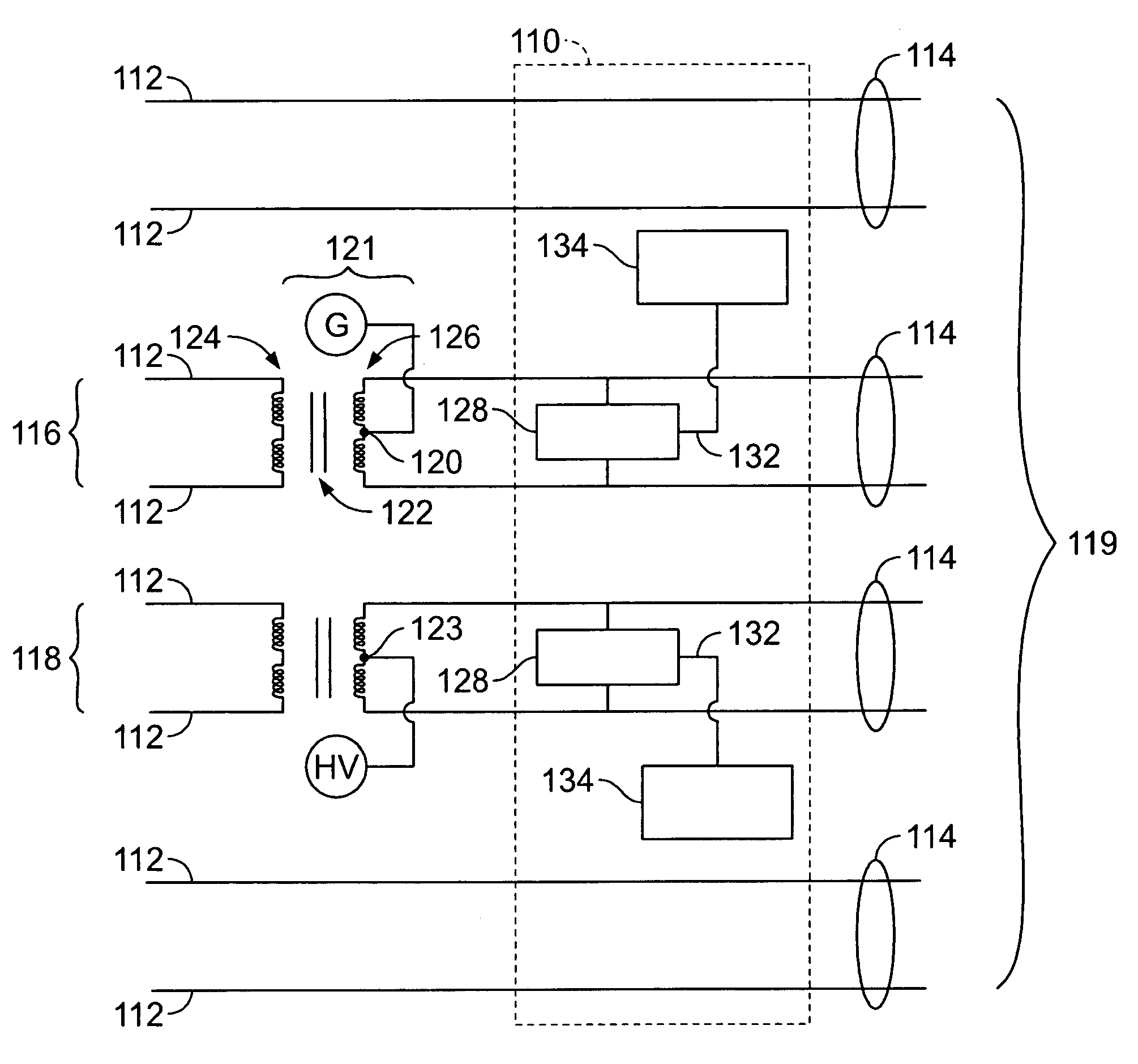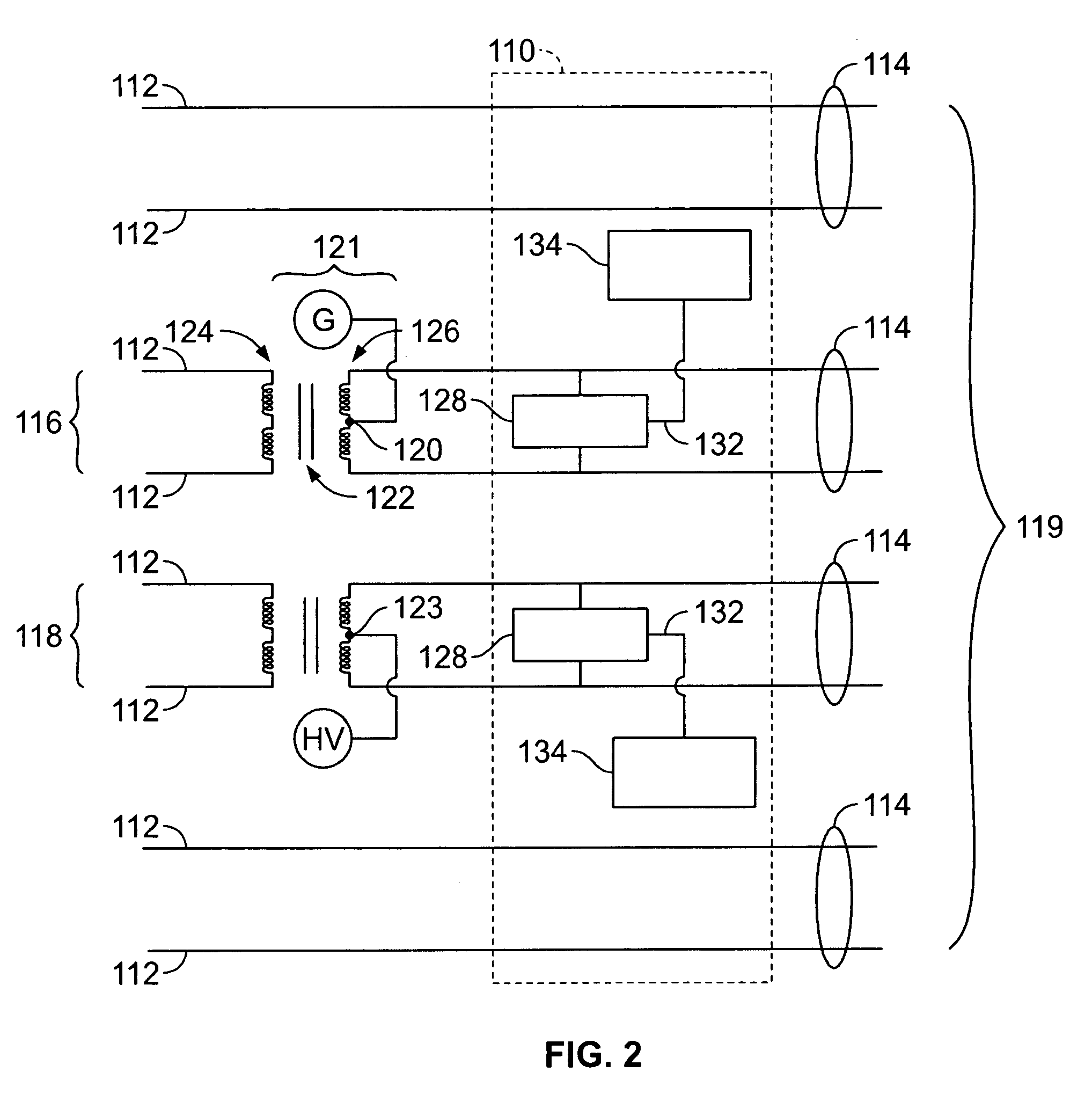Method and apparatus for providing out of band communications over structured cabling
- Summary
- Abstract
- Description
- Claims
- Application Information
AI Technical Summary
Benefits of technology
Problems solved by technology
Method used
Image
Examples
Embodiment Construction
[0019]FIG. 1 illustrates a transmission frequency range of an out of band communications apparatus, such as, for example, a structured data cable. The frequency is shown along the X-axis of the graph, and the signal intensity is shown along the Y-axis of the graph. As indicated in FIG. 1, the frequency range is divided into a low frequency range 100, a mid frequency range 102, and a high frequency range 104. The low frequency range 100 is generally used for power transmission, such as, for example, direct current (DC) power, which has a frequency of 0 Hertz (Hz), or alternating current (AC) power, which has a frequency of approximately 50 Hz or 60 Hz. As such, the low frequency range 100 is typically between 0 Hz and approximately 100 Hz. In the graph of FIG. 1, signals are being transmitted in the low frequency range 100 and in the high frequency range 104.
[0020] The high frequency range 104 is generally used for high speed data transmission, such as, for example, Ethernet data tr...
PUM
 Login to View More
Login to View More Abstract
Description
Claims
Application Information
 Login to View More
Login to View More - R&D
- Intellectual Property
- Life Sciences
- Materials
- Tech Scout
- Unparalleled Data Quality
- Higher Quality Content
- 60% Fewer Hallucinations
Browse by: Latest US Patents, China's latest patents, Technical Efficacy Thesaurus, Application Domain, Technology Topic, Popular Technical Reports.
© 2025 PatSnap. All rights reserved.Legal|Privacy policy|Modern Slavery Act Transparency Statement|Sitemap|About US| Contact US: help@patsnap.com



